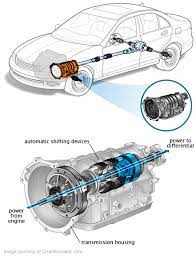My Car's Tires Seem to Be Wearing Unevenly. What Might Be Causing This Problem?
Your car's tires are a critical component of your vehicle's safety and performance. Properly maintained tires not only provide a smoother ride but also contribute to fuel efficiency and overall handling. However, if you've noticed that your car's tires are wearing unevenly, it's a sign that something may be amiss. In this blog, we'll explore some common causes of uneven tire wear and why visiting a car wheel alignment service center is crucial to address this issue.
Uneven Tire Wear: The Warning Signs
Uneven tire wear can manifest in various ways, and recognizing these signs is essential for early detection and prevention of further damage. Here are some common indicators of uneven tire wear:
- Cupping or scalloping: This appears as a series of small, irregular dips or hills around the tire's tread. It often indicates a suspension or alignment problem.
- Feathering: Feathering is when the tread ribs on one side of a tire are higher than on the other side. It can occur due to misalignment, incorrect tire inflation, or worn suspension components.
- Toe wear: Toe wear occurs when the inside or outside edges of a tire wear down faster than the center. It's often a sign of improper wheel alignment.
- Camber wear: Camber wear happens when the tire tread wears unevenly across the width of the tire. This can result from a misaligned wheel or worn suspension parts.
- Patchy or localized wear: Irregular wear in specific areas of the tire can indicate a range of problems, from overinflation to suspension issues.
Common Causes of Uneven Tire Wear
Now that we've identified the warning signs, let's delve into some common culprits responsible for uneven tire wear:
- Misalignment: One of the most frequent causes of uneven tire wear is improper wheel alignment. If your wheels are not aligned correctly, they can exert uneven pressure on the tires, causing them to wear unevenly.
- Underinflation or Overinflation: Maintaining the right tire pressure is crucial. Underinflated tires can lead to increased wear on the outer edges, while overinflated tires can cause wear in the center.
- Suspension Issues: Worn or damaged suspension components, such as shock absorbers or struts, can result in uneven tire wear. A compromised suspension system cannot adequately distribute the vehicle's weight.
- Driving Habits: Aggressive driving, hard braking, and taking corners at high speeds can accelerate tire wear. It's essential to practice safe driving habits to extend the life of your tires.
Why Visit a Car Wheel Alignment Service Center?
When you notice signs of uneven tire wear, taking your car to a reputable car wheel alignment service center is crucial. Here's why:
- Precise Diagnosis: Professional technicians at alignment service centers have specialized tools and expertise to accurately diagnose the cause of uneven tire wear. They can identify issues that might not be visible to the naked eye.
- Alignment Correction: If misalignment is the problem, these centers can perform wheel alignments to ensure your tires are properly aligned, preventing further uneven wear.
- Suspension Inspection: Technicians can inspect your vehicle's suspension components and address any worn or damaged parts, restoring your vehicle's handling and tire wear.
- Tire Rotation: Service centers can also perform tire rotations, ensuring that your tires wear more evenly over time, prolonging their lifespan.
- Safety: Properly aligned wheels and well-maintained tires are essential for road safety. By addressing uneven tire wear promptly, you're enhancing your safety on the road.
Conclusion
Uneven tire wear is not just a cosmetic issue; it can lead to reduced performance, decreased fuel efficiency, and compromised safety. To address this problem effectively, visit a car wheel alignment service center. Their expertise and equipment can diagnose and correct the underlying issues, ensuring your tires wear evenly and your car remains safe and efficient on the road. Remember, regular maintenance and attention to your tires are key to a smoother, safer driving experience.


Comments
Post a Comment